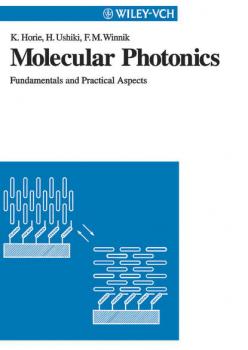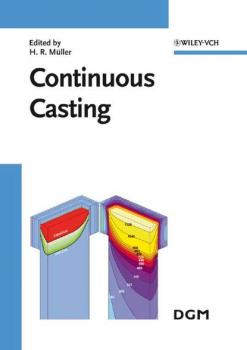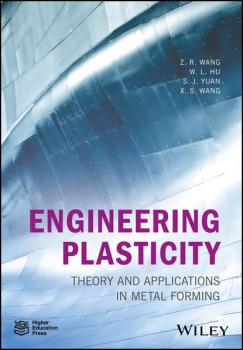MREADZ.COM - много разных книг на любой вкус
Скачивание или чтение онлайн электронных книг.Molecular Photonics
New organic compounds with interesting and improved electronic and photonic properties are being reported on a daily basis, with new light-triggered materials being designed for molecular and bioelectronic devices. The relatively new concept of molecular photonics embraces photochemistry and photophysics, dealing with light-induced changes in materials and their electronic states as well as the field of optics. This volume begins with a background and survey of current light-related research fields, moving on to the fundamentals of molecular photonics. Subsequent chapters deal with the characteristics of photochemical reaction and typical processes of photophysical chemistry, while the last two chapters focus on the study of materials-induced changes in light. The most important concepts are summarized in overview tables to promote active understanding of new topics. .
Microsystem Technology
This completely revised edition of a bestselling concise introduction to microsystems technology includes the latest trends in this emerging scientific discipline. The chapters on silicium and LIGA technology are greatly expanded, whilst new topics include application aspects in medicine and health technology, lithography and electroplating.
Silicon Devices
Silicon is the most important material for the electronics industry. In modern microelectronics silicon devices like diodes and transistors play a major role, and devices like photodetectors or solar cells gain ever more importance. This concise handbook deals with one of the most important topics for the electronics industry. World renowned authors have contributed to this unique overview of the processing of silicon and silicon devices.
Moderne Beschichtungsverfahren
Im vorliegenden Buch werden industriell eingesetzte Beschichtungsverfahren aus den Bereichen des Auftragschwei?ens und -lotens, des Plasma-, Lichtbogen- und Flammspritzens, der Sol-Gel-Technik sowie der Dunnschicht-technologien, Chemical-Vapor-Deposition und Physical-Vapor-Deposition, vorgestellt. Besondere Bedeutung wird dabei der Verbindung von Prozess- und Werkstofftechnologie im Hinblick auf das Herstellen anforderungsgerechter Schichten beigemessen. Weiterhin werden neu entwickelte, an der Schwelle zur industriellen Einfuhrung stehende Beschichtungsverfahren aufgezeigt. Das Buch versetzt Ingenieure und Techniker in die Lage, das Potenzial von Oberflachenschutzschichten und den zugehorigen Beschichtungsverfahren fur ihren Arbeitsbereich abschatzen zu konnen, so dass die Beschich- tungstechnologie integraler Bestandteil in der Entwicklung, Konstruktion und Fertigung wird.
Continuous Casting
During the last decade, continuous casting has gained increasing importance as a highly developed technology for the production of superior quality pre-forms for specific subsequent processing by both the copper and the light metals industry. Current progress also includes spray forming as an increasingly important processing option. Therefore, experts from the manufacturing industry, researchers and scientists from university and industry as well as suppliers of equipment and ancillary products need to stay up-to-date on most recent technical, economical and ecological developments. These Proceedings of the Continuous Casting 2005 conference will review the complete range of the processing chain covering both melt treatment and casting technology as well as specific measures for micro-structural control. A focal point of the programme will deal with modelling and simulation that has become an integral part of modern manufacturing. But also safety and health aspects will be approached.
Shot Peening
Shot peening has been proved to be a powerful instrument in enhancing the resistance of materials to various kinds of stress-induced damage, particularly against damage due to cyclic loading (fatigue) in air or in aggressive environments. As shot peening can be used for a wide variety of structural components irrespective of shape and dimensions, the number of shot peening applications in many industrial branches is increasing. The use of peen forming as a technique to form large metal parts into complicated shapes is also increasing, particularly in the aerospace industry. The Conference covers all aspects of the Science, Technology and Application of Shot Peening, and was intended to attract users, manufacturers as well as scientists working in the field of «Materials Treatment by Shot Peening». Emphasis was put on the current state of knowledge and research. This book offers scientists and engineers an unique opportunity to update their knowledge on shot peening.
Polymer Brushes
Materials scientists, polymer chemists, surface physicists and materials engineers will find this book a complete and detailed treatise on the field of polymer brushes, their synthesis, characterization and manifold applications. In a first section, the various synthetic pathways and different surface materials are introduced and explained, followed by a second section covering important aspects of characterization and analysis in both flat surfaces and particles. These specific surface initiated polymerization (SIP) systems such as linear polymers, homopolymers, block copolymers, and hyperbranched polymers are unique compared to previously reported systems by chemisorption or physisorption. They have found their way in both large-scale and miniature applications of polymer brushes, which is covered in the last section. Such 'hairy' surfaces offer fascinating opportunities for addressing numerous problems of both academic and, in particular, industrial interest: high-quality, functional or protective coatings, composite materials, surface engineered particles, metal-organic interfaces, biological applications, micro-patterning, colloids, nanoparticles, functional devices, and many more. It is the desire of the authors that this book will be of benefit to readers who want to «brush-up on polymers».
Kinetic Processes
The formation of solids is governed by kinetic processes, which are closely related to the macroscopic behaviour of the resulting materials. With the main focus on ease of understanding, the author begins with the basic processes at the atomic level to illustrate their connections to material properties. Diffusion processes during crystal growth and phase transformations are examined in detail. Since the underlying mathematics are very complex, approximation methods typically used in practice are the prime choice of approach. Apart from metals and alloys, the book places special emphasis on the growth of thin films and bulk crystals, which are the two main pillars of modern device and semiconductor technology. All the presented phenomena are tied back to the basic thermodynamic properties of the materials and to the underlying physical processes for clarity.
Engineering Plasticity
An all-in-one guide to the theory and applications of plasticity in metal forming, featuring examples from the automobile and aerospace industries Provides a solid grounding in plasticity fundamentals and material properties Features models, theorems and analysis of processes and relationships related to plasticity, supported by extensive experimental data Offers a detailed discussion of recent advances and applications in metal forming
Materials Characterization
This book covers state-of-the-art techniques commonly used in modern materials characterization. Two important aspects of characterization, materials structures and chemical analysis, are included. Widely used techniques, such as metallography (light microscopy), X-ray diffraction, transmission and scanning electron microscopy, are described. In addition, the book introduces advanced techniques, including scanning probe microscopy. The second half of the book accordingly presents techniques such as X-ray energy dispersive spectroscopy (commonly equipped in the scanning electron microscope), fluorescence X-ray spectroscopy, and popular surface analysis techniques (XPS and SIMS). Finally, vibrational spectroscopy (FTIR and Raman) and thermal analysis are also covered.









